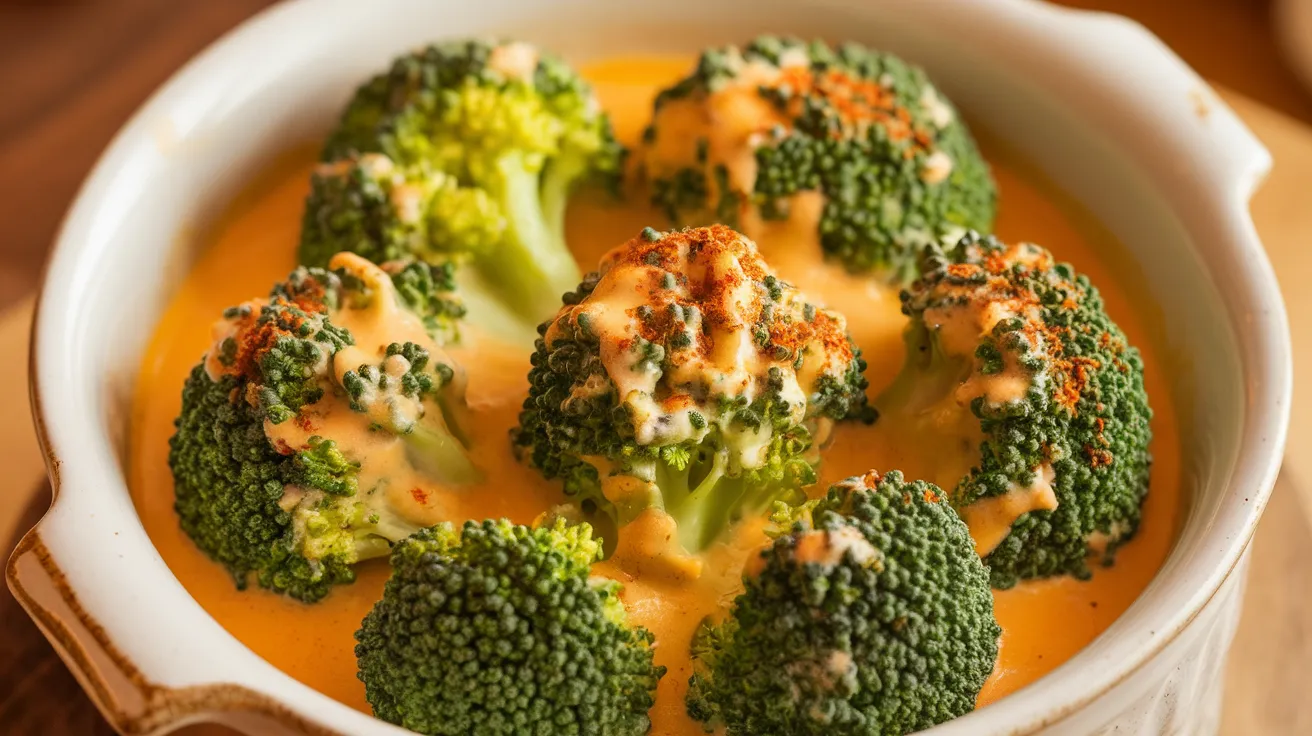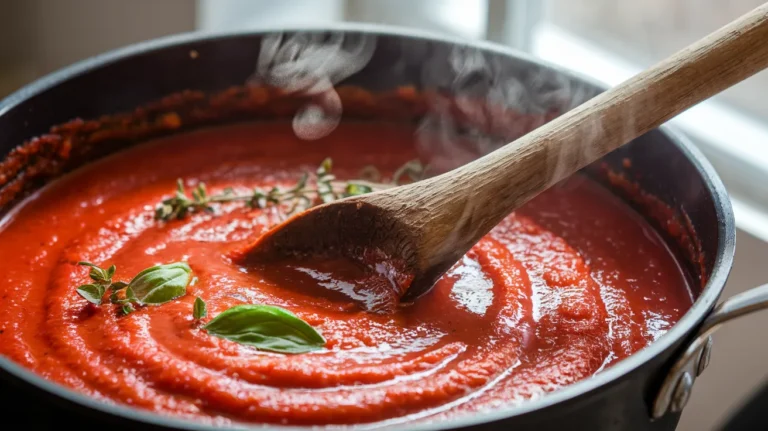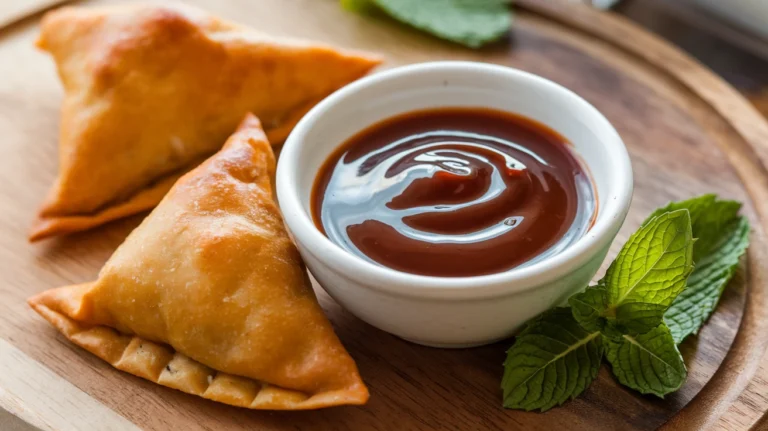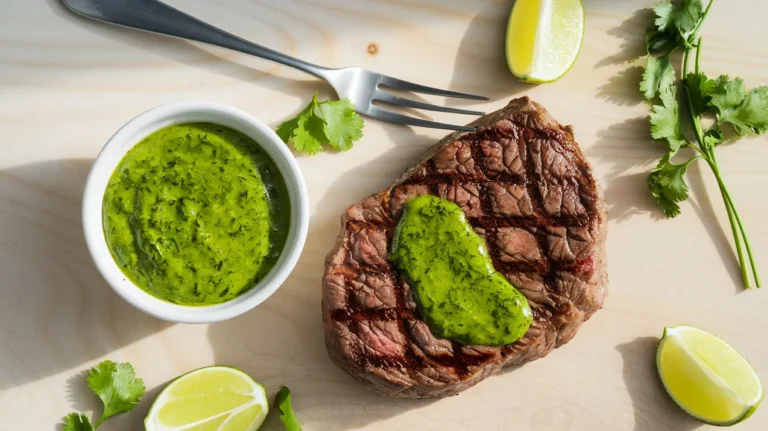This creamy, restaurant-quality cheese sauce for broccoli turns ordinary vegetables into an irresistible comfort food side dish. Our step-by-step cheese sauce for broccoli guide walks beginners through creating a smooth, rich sauce that perfectly coats every green floret, making vegetables the star of your dinner table.
SERVES: 4 | PREP: 15 MIN | COOK: 20 MIN | TOTAL: 35 MIN
Ingredients
For the Cheese Sauce:
| Ingredient | Amount |
|---|---|
| Butter | 4 tablespoons |
| All-purpose flour | 4 tablespoons |
| Whole milk | 2 cups |
| Sharp cheddar cheese, grated | 1½ cups |
| Cream cheese | 4 oz, softened |
| Dijon mustard | 1 teaspoon |
| Garlic powder | ½ teaspoon |
| Salt | ½ teaspoon |
| White pepper | ¼ teaspoon |
| Paprika | ¼ teaspoon |
For the Broccoli:
| Ingredient | Amount |
|---|---|
| Fresh broccoli crowns | 2 large heads |
| Salt | 1 tablespoon |
Detailed Step-by-Step Instructions for Cheese Sauce for Broccoli
Phase 1: Preparing Perfect Broccoli (12 minutes)
- Prepare your broccoli florets carefully. Start by washing the broccoli heads under cold running water. Using a sharp knife, cut the broccoli into uniform bite-sized pieces, about 1½ inches wide. Why this matters: Equal-sized pieces cook evenly and hold the cheese sauce better. Cut through the thick stems at an angle to help them cook faster than the delicate florets.
- Set up your boiling station. Fill a large pot (at least 4-quart capacity) with water, filling it about ¾ full. Place it on your stove over high heat and cover with a lid to speed up boiling. Beginner tip: The pot should be large enough that the broccoli has room to move around freely.
- Add salt to create properly seasoned water. Once the water reaches a rolling boil (you’ll see large bubbles constantly breaking the surface), add 1 tablespoon of salt. Stir it in completely. What you’re looking for: The water should taste like mild seawater – this seasons the broccoli from the inside out.
- Cook the broccoli with precise timing. Carefully add all the broccoli florets to the boiling water at once. Set a timer for exactly 3 minutes. The water will stop boiling momentarily – that’s normal. Once it returns to a boil, start your timer. Visual cue: The broccoli will turn bright, vibrant green when it’s perfectly cooked.
- Test for perfect doneness. After 3 minutes, quickly fish out one piece with a fork. It should pierce easily but still have a slight firmness when you bite it. Important: The broccoli will continue cooking slightly from residual heat, so slightly undercooking is perfect.
- Stop the cooking process immediately. Drain the broccoli in a colander and immediately rinse with cold running water for 30 seconds. This stops the cooking and preserves that bright green color. Shake off excess water and transfer to your serving bowl. Set aside while you make the sauce.
Phase 2: Building the Cheese Sauce Base (6 minutes)
- Start your roux foundation. In a medium heavy-bottomed saucepan (about 3-quart size), place 4 tablespoons of butter over medium heat. Why heavy-bottomed: It distributes heat evenly and prevents burning. Watch the butter melt completely – it should bubble gently but not brown. Visual cue: The butter is ready when it’s completely melted and makes a soft sizzling sound.
- Create the thickening agent. Add 4 tablespoons of flour all at once to the melted butter. Immediately start whisking vigorously in a figure-8 pattern. Beginner technique: Don’t panic if it looks lumpy at first – keep whisking and it will smooth out. Cook this mixture for exactly 2 minutes, whisking constantly. What you’re achieving: This cooks out the raw flour taste and creates a paste called a roux.
- Perfect your roux consistency. The mixture should look like wet sand and smell slightly nutty, but not brown. If you see any brown color, your heat is too high – reduce it immediately. Texture check: When you lift your whisk, the roux should coat it smoothly without any lumps.
Phase 3: Creating the Creamy Cheese Sauce for Broccoli Base (10 minutes)
- Add milk gradually to prevent lumps. Remove the pan from heat temporarily. Start adding the 2 cups of milk very slowly – begin with just ¼ cup while whisking constantly. Critical technique: Pour the milk in a thin stream while whisking vigorously. This prevents the dreaded lumpy sauce. Add another ¼ cup, whisk until smooth, then add the remaining milk in three additions.
- Return to heat and thicken the sauce. Place the pan back on medium heat and bring the mixture to a gentle simmer, whisking frequently. What to watch for: Small bubbles will start forming around the edges first, then the entire surface will have gentle bubbles. Timing: This takes about 4-5 minutes. Don’t rush this step.
- Achieve perfect sauce consistency. Continue cooking and whisking for 3-4 more minutes until the sauce noticeably thickens. Consistency test: Dip a spoon in the sauce and run your finger across the back – the line should hold for 2-3 seconds before slowly filling in. If it’s too thin, cook 1-2 minutes longer. If it’s too thick, whisk in milk 1 tablespoon at a time.
Phase 4: Adding Cheese for Perfect Cheese Sauce for Broccoli (8 minutes)
- Remove from heat for cheese addition. This is crucial – turn off the heat completely and remove the pan from the burner. Hot direct heat can cause cheese to become grainy and break. Why this step matters: Cheese contains proteins that seize up when overheated, creating an unpleasant texture.
- Add cream cheese first for ultra-smoothness. Add the 4 oz of softened cream cheese (it should be soft enough to easily spread). Whisk vigorously until it’s completely dissolved and the sauce is perfectly smooth. Beginner tip: If your cream cheese was too cold, break it into smaller pieces and whisk longer – it will eventually smooth out.
- Incorporate cheddar cheese gradually. Add the grated sharp cheddar in three separate additions. Add ½ cup first, whisk until completely melted and smooth, then add another ½ cup, whisk smooth, then add the final ½ cup. Why gradually: This prevents the cheese from clumping and ensures silky smoothness. Time for each addition: About 1-2 minutes of whisking.
- Season your cheese sauce for broccoli. Add the Dijon mustard, garlic powder, salt, white pepper, and paprika all at once. Whisk thoroughly to distribute evenly. Taste test: Dip a clean spoon in and taste – adjust salt if needed. The sauce should be rich, creamy, and well-seasoned.
- Check final consistency and temperature. The finished sauce should coat a spoon but still pour smoothly. If it’s too thick, whisk in milk 1 tablespoon at a time. If it’s too thin, return to low heat for 1-2 minutes, whisking constantly. Final texture: It should be like thick heavy cream.
Phase 5: Combining and Serving (3 minutes)
- Combine hot sauce with broccoli. Pour the hot cheese sauce for broccoli over the prepared broccoli florets. Using a large spoon or tongs, gently toss to coat every piece completely. Serving tip: Serve immediately while hot for the best texture and flavor. The residual heat will warm the broccoli perfectly.
Chef’s Notes for Perfect Cheese Sauce for Broccoli
• Temperature Control: Always remove from heat before adding cheese to prevent the cheese sauce for broccoli from breaking. If it does break, whisk in cold butter off the heat.
• Cheese Selection: Sharp cheddar provides the best flavor balance, but you can substitute with Gruyère, white cheddar, or a blend for different flavor profiles.
• Make-Ahead Strategy: Prepare the white sauce base and store separately from cheese. Add cheese just before serving for optimal texture.
• Consistency Rescue: If your sauce becomes too thick, gradually whisk in warm milk. If too thin, mix 1 tablespoon cornstarch with 2 tablespoons cold milk and whisk in.
Nutrition Information (Per Serving)
- Calories: 285
- Protein: 14g
- Carbohydrates: 18g
- Fat: 19g
- Fiber: 4g
- Calcium: 425mg
Creative Cheese Sauce for Broccoli Variations
1. Smoky Bacon Enhancement
Add 4 strips of crispy bacon, chopped fine, and ½ teaspoon smoked paprika for a hearty twist that transforms this into a complete side dish.
2. Fresh Herb Garden Style
Stir in 2 tablespoons fresh chives and 1 tablespoon fresh thyme for a garden-fresh flavor that pairs beautifully with our aioli sauce for fries techniques.
3. Spicy Jalapeño Version
Add 2 finely minced jalapeños and ¼ teaspoon cayenne pepper for heat lovers who want their vegetables with a kick.
4. Gourmet Three-Cheese Blend
Replace half the cheddar with Gruyère and add 2 tablespoons grated Parmesan for sophisticated flavor similar to our sauce for asparagus approach.
Storage & Reheating Your Cheese Sauce for Broccoli
Refrigerator Storage
Store leftover cheese sauce for broccoli in an airtight container for up to 3 days. The sauce will thicken considerably when cold – this is normal.
Reheating Instructions
• Stovetop Method: Heat gently over low heat, whisking constantly and adding milk 1 tablespoon at a time until smooth • Microwave Method: Heat in 30-second intervals at 50% power, stirring between each, adding milk as needed • Oven Method: Cover tightly and reheat at 350°F for 15 minutes, stirring halfway through
Freezing Guidelines
Not recommended – dairy-based sauces typically separate when frozen and thawed, compromising the smooth texture.
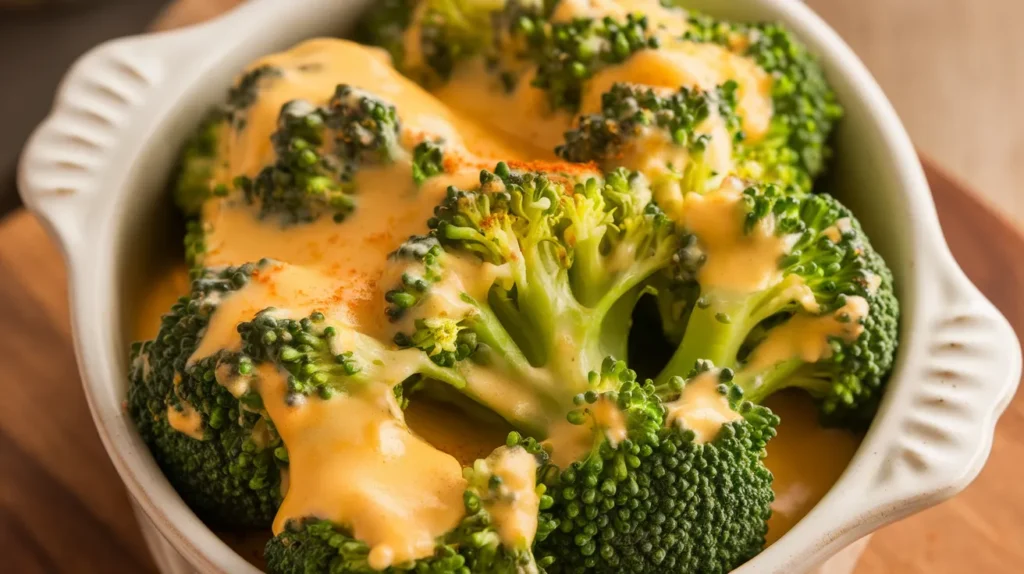
Troubleshooting Guide for Cheese Sauce for Broccoli
Problem: Sauce is Lumpy
Solution: Strain through a fine-mesh sieve or use an immersion blender briefly. Prevention: Always whisk constantly when adding milk to the roux.
Problem: Sauce is Too Thin
Solution: Mix 1 tablespoon cornstarch with 2 tablespoons cold milk, whisk into sauce, and simmer 2 minutes until thickened.
Problem: Cheese Won’t Melt Smoothly
Solution: Remove from heat completely, add cheese more gradually, and whisk vigorously. Always use freshly grated cheese – pre-shredded contains anti-caking agents.
Problem: Sauce Tastes Bland
Solution: Add more Dijon mustard (½ teaspoon at a time), a pinch of nutmeg, or increase salt gradually. Always taste after each addition.
Problem: Sauce Broke or Looks Grainy
Solution: Remove from heat immediately, whisk in 1-2 tablespoons cold butter until smooth, then strain if necessary to remove any remaining lumps.
Equipment Essentials
• Heavy-bottomed saucepan (3-quart minimum) – prevents scorching • Wire whisk (balloon whisk preferred) – for smooth mixing • Large pot for boiling broccoli (4-quart minimum) • Fine-mesh strainer – for emergency lump removal • Box grater for fresh cheese grating • Measuring cups and spoons – accuracy is key • Large serving bowl – for combining final dish
Shopping List
Dairy Section:
- Butter (1 stick needed)
- Whole milk (16 oz carton)
- Sharp cheddar cheese block (8 oz for grating)
- Cream cheese (8 oz package)
Produce Section:
- Fresh broccoli crowns (2 large heads, about 2 lbs total)
Pantry Items:
- All-purpose flour
- Dijon mustard
- Garlic powder
- Salt and white pepper
- Paprika
Success Secrets for Perfect Cheese Sauce for Broccoli
- Room Temperature Ingredients: Remove cream cheese from refrigerator 30 minutes before cooking for the smoothest incorporation into your cheese sauce for broccoli.
- Fresh Cheese is Key: Always grate cheese from a block rather than buying pre-shredded. The anti-caking agents in pre-shredded cheese prevent smooth melting.
- Low and Slow Cheese Addition: Never rush the cheese-melting process. High heat causes proteins to seize and create an unappetizing grainy texture in your cheese sauce for broccoli.
- Perfect Broccoli Timing: Slightly undercook the broccoli since it will continue cooking when the hot cheese sauce is added. This prevents mushy vegetables.
- Sauce Consistency Test: The finished cheese sauce for broccoli should coat the back of a spoon but still drip off in smooth ribbons – this ensures perfect coverage without being too thick or thin.
This foolproof cheese sauce for broccoli recipe delivers restaurant-quality results every time, transforming simple vegetables into an irresistible side dish that even the most reluctant vegetable eaters will request again and again.
